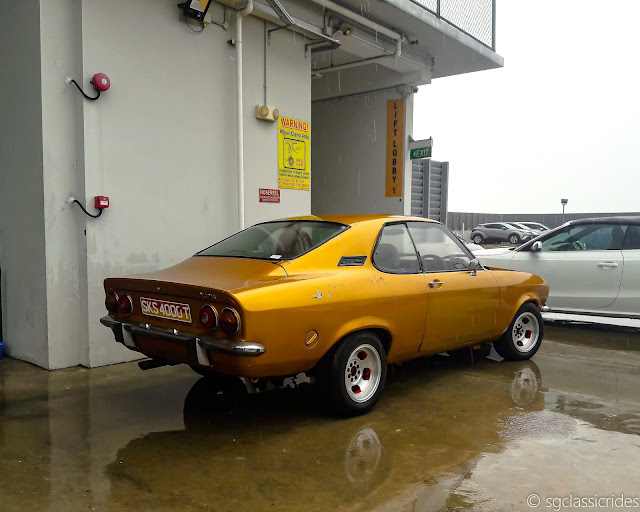With the year drawing to a close, I thought it was fitting to write about one of my archives from 2 years back: the rainy weather actually fitted the overall vibes somehow during this time. Seeing unknown classics is always gratifying, especially when no one has yet to bring in new units. It is interesting to see how the usual models are in demand but not like this 1971 Opel Manta A L!
Founded by Adam Opel in Rüsselsheim, Germany on 1862, Opel started off as a manufacturer of sewing machines. It began to make bicycles in 1886 and the first cars were designed in 1899. Opel was the first German car manufacturer to incorporate a mass-production assembly line and by 1928, it was Germany's largest car exporter and had a 37.5% market share. Opel was also instrumental in popularising rockets as a means of propulsion for vehicles, and thus played a significant role in the history of spaceflight and rocket technology. In 1931, General Motors fully acquired Opel and the highly successful Kapitan was introduced in 1935. Automobile production stopped in 1940 and munitions production began in 1942 for the war effort.
After the war ended, the Opel factories were rebuilt by former employees. GM had also acquired Vauxhall and this led to a rationalisation of the Vauxhall/Opel range across Europe. By the 1980s, Vauxhall and Opel were one and the same. However, GM began making losses in the 1990s and it prompted them to enter an alliance with PSA Peugeot Citroen in 2012: the complete acquisition by PSA was finalised in 2017.
The Opel logo changed over the years: initially sporting an AO logo, it was changed to a ring crossed by a flying thing in the 1930s. The current logo (with a ring and horizontal lightning) was developed at the end of the 1960s, which is both easily recognisable and reproducible. Opels were sold in Singapore since the 1940s and enjoyed moderate success: quite a few can be seen from old photos from that period. However, classic Opels do not appear to be as collectible as their fellow German brands even till today. Currently, Opels are more commonly seen on private hire cars and their numbers are decreasing every year.
In the 1960s, Opel developed a competing model for the Ford Capri known internally as 'Project 1450': this was in response to the advent of 'pony cars' first introduced by Ford with its Mustang. Opel also noted the 'Stingray' name affixed to Chevrolet Corvettes and decided to adapt the manta ray to its newest offering. From the beginning, Opel marketed the Manta as a sporty men's car: the swooping, graceful body was unlike any other Opel even though it was partly based off the Ascona. The elongated hood with the 'sharknose' front reminiscent of BMW's E9, the rear section with its 4 round headlights and wide doors with frameless windows captured much attention from the public.
Although it was available only in a 5-seater coupe form, there were 3 main engine types (1.2 litre, 1.6 litre and 1.9 litre). Various trims and special editions were also developed: for instance, the L (for Luxury) trim included chrome-plated tailpipes, pivoting windows for the rear passengers, cigarette lighters and an electric clock. This Manta A with the L trim was powered by a 1584 cc Opel CIH i4 engine, allowing it to reach a top speed of 154 km/h with an acceleration of 17 seconds [0-100 km/h]. It was 4343 mm long and weighed 945 kg, with a fuel consumption of 9.8 litres/100 km.
Production of the Manta A ended in 1975 with 498,553 units made, where it was replaced by the Manta B. Manta As were sold in Singapore in 1971 by Singapore Motors, although most reviews at that time were focused on the 1.9 litre variant. This unit is an original Singapore-registered car and it is believed to be the only one left here: apparently no one has imported any in currently. Based on old car listings, it has changed colour a few times from blue, to white and its current gold paint scheme.
Coming across one of these rarities is always a pleasant surprise: one naturally wonders what adventures it has experienced and how it actually survived all these years. Considering that Opel does not seem to be desirable among classic car collectors, hanging on to one is a testament to the owner's passion and love for what it is. Perhaps you will be able to see it one day and admire this survivor for yourself!
















































